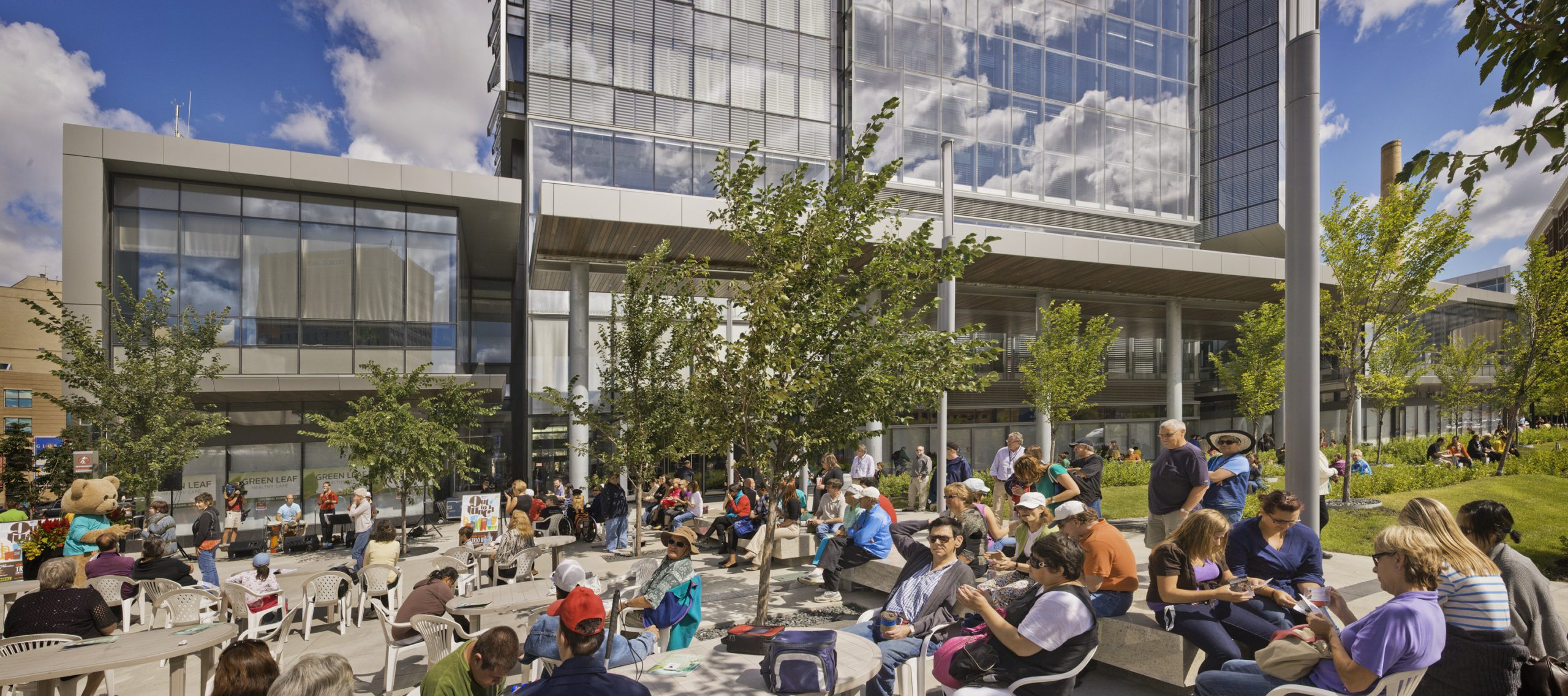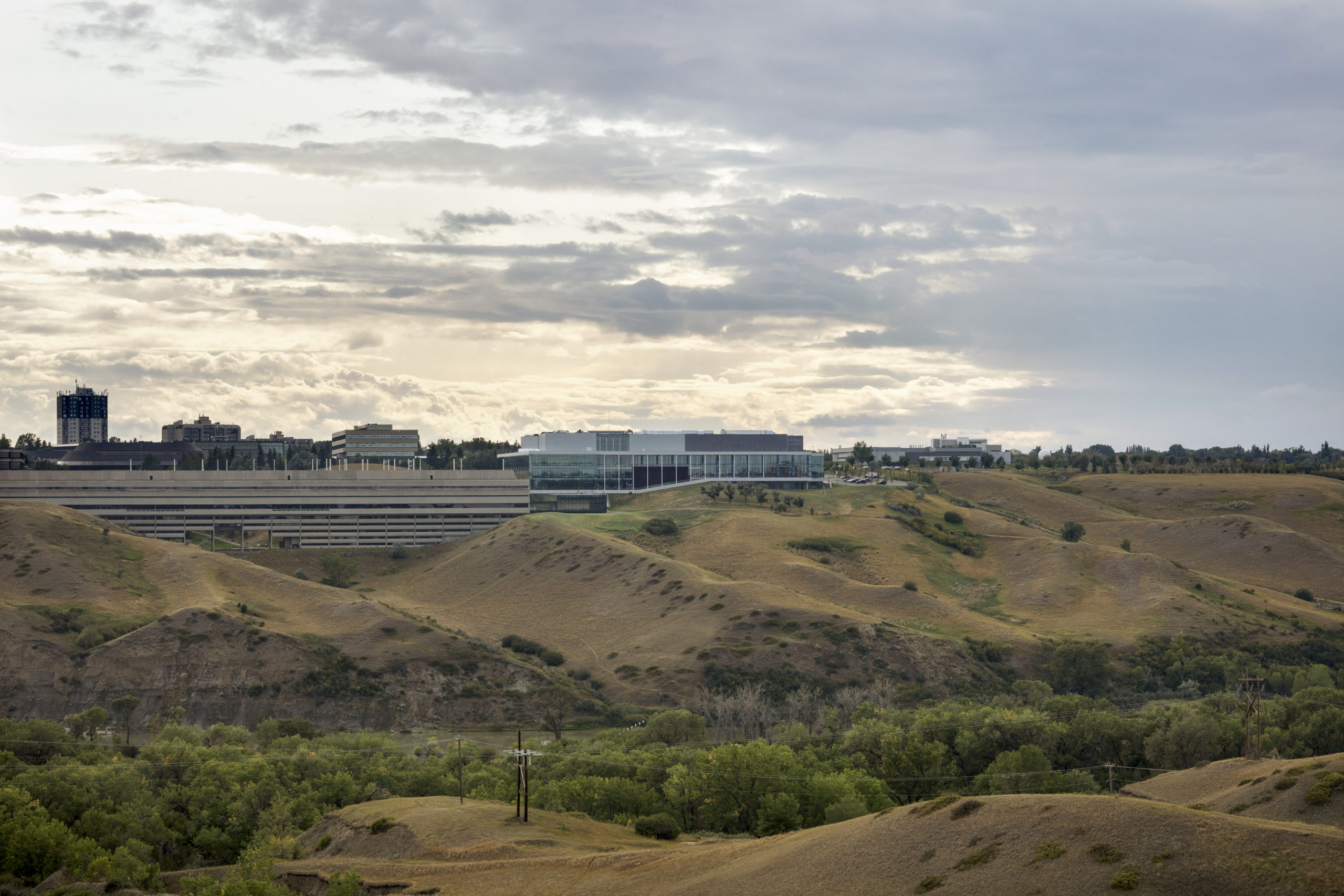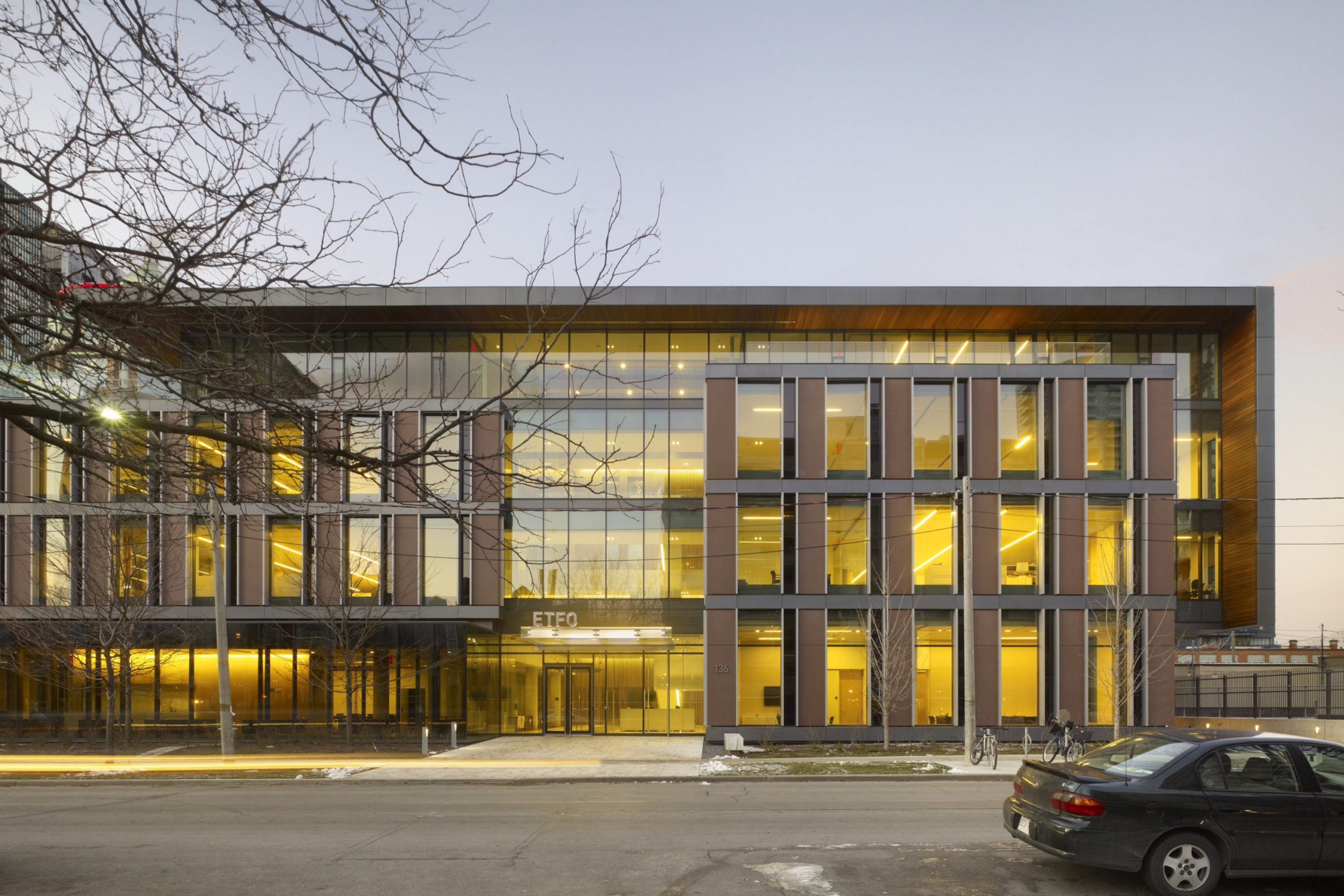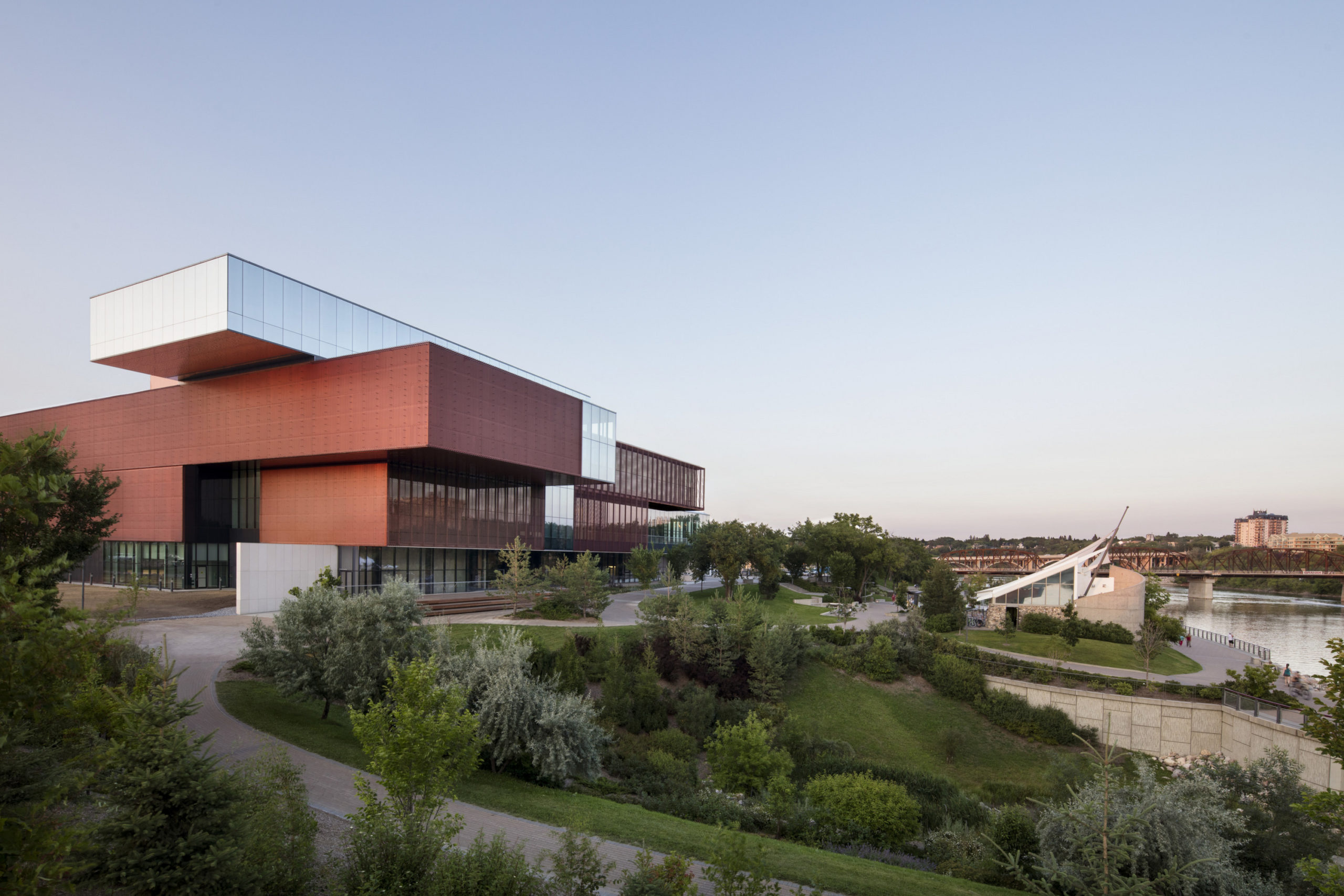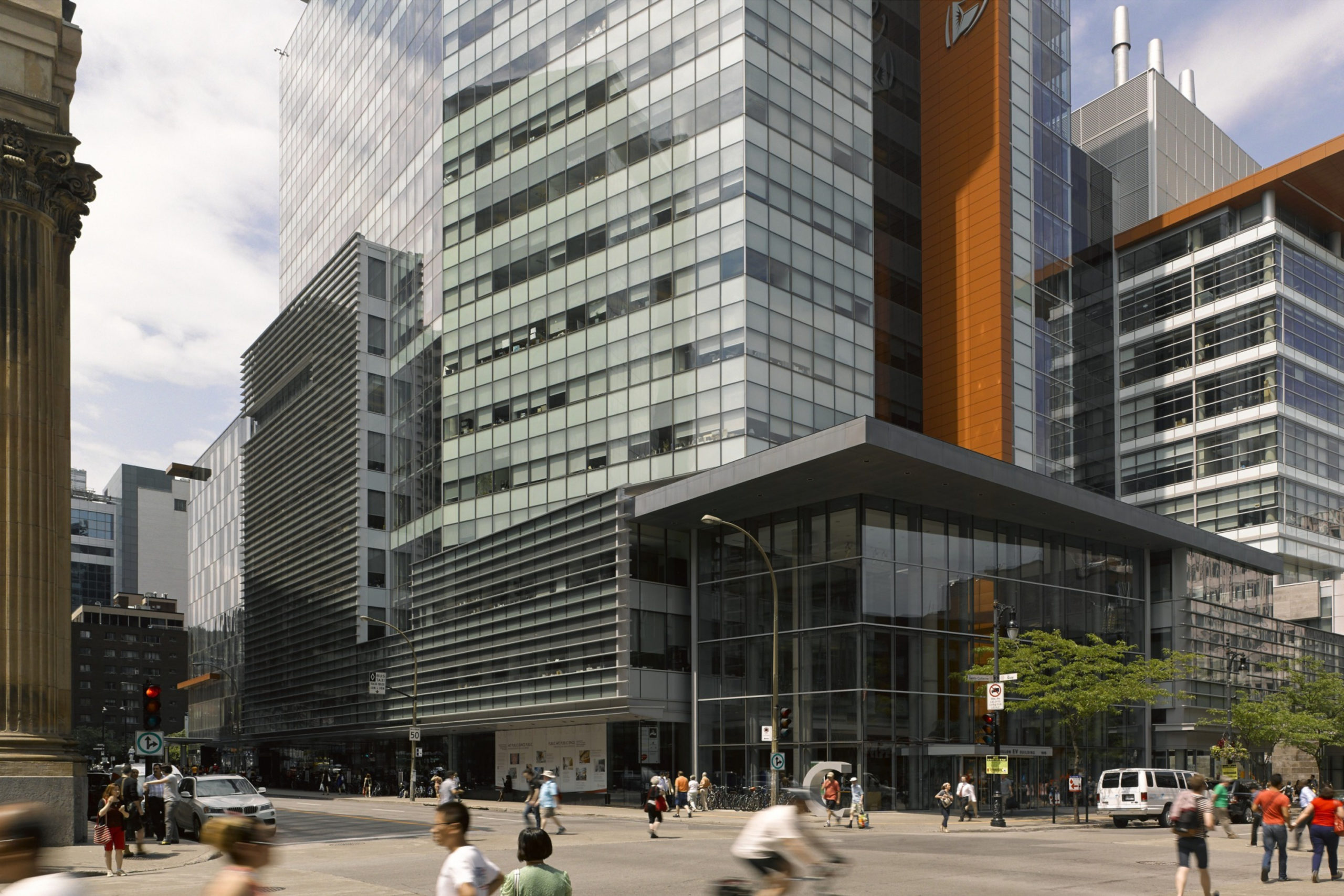Manitoba Hydro Place
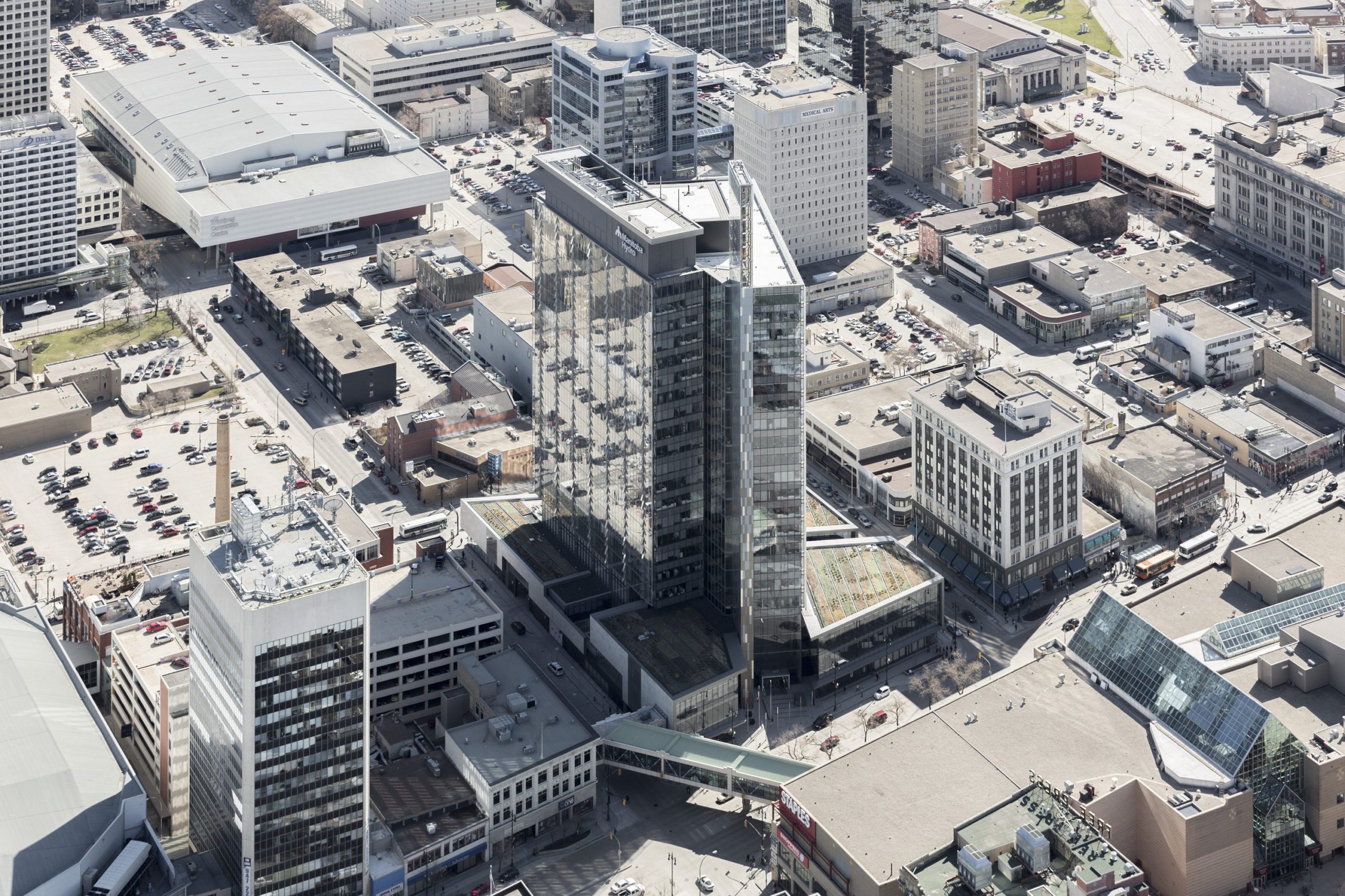
- Location Winnipeg, Manitoba
- Client Manitoba Hydro
- Architects KPMB Architects (Design Architects), Architecture49 (Executive Architect), Transsolar (Specialist Energy/Climate Engineer), Prairie Architects Inc. (Advocate Architect)
- Completion 2009
- Size 695,250 ft² / 64,590 m²
- Project type Office, Tower
Getting to 2050: A Model for Net Zero & Extreme Climate, Large-Scale Tower Design
A Design to Respond to Climate Change
Manitoba Hydro Place introduces a new paradigm to lead the AEC industry to a carbon-neutral future using a formal Integrated Design Process. Every element melds performance and aesthetics: solar chimney, wintergardens, waterfalls, thermal mass, vertical neighbourhoods, double façade, geothermal, public park, public galleria. Every part of the whole was conceived and designed in the service of providing a healthy supportive workplace for Hydro’s greatest asset – its people. The outcome is a reduction in absenteeism (1.5 days per employee) and massive energy savings.
The original target of 60% energy reduction has been exceeded by 77%, and the design is in fact 80% more efficient than conventional Winnipeg buildings, making it the third most energy efficient large scale building in the world. It is also the first large-scale office tower in North America to be LEED Platinum-certified.
Harnessing an Extreme Climate for Passive Energy
The fully integrated design capitalize on Winnipeg’s unusual abundance of sunshine and dominant gusting south winds to harness passive solar and wind energies. The capital ‘A’ form of the tower comprises two wings fused at the north and splayed open to the south. The splay is filled with three, six-storey stacked atria / ‘winter gardens’ that act as the lungs of the building and feature 24-metre-tall waterfalls which humidify/dehumidify (dependent on the season) incoming air.
- Manitoba Hydro Place: Design, construction, operation – lessons learned. PLEA 2013 29th Conference, Sustainable Architecture for a Renewable Future, Munich, Germany 10-12 September 2013
- Harnessing Climate – by Bruce Kuwabara, Thomas Auer, Tom Akerstream, Glen Klym with Mark Pauls, Kael Opie and John Peterson in High Performance Buildings Magazine
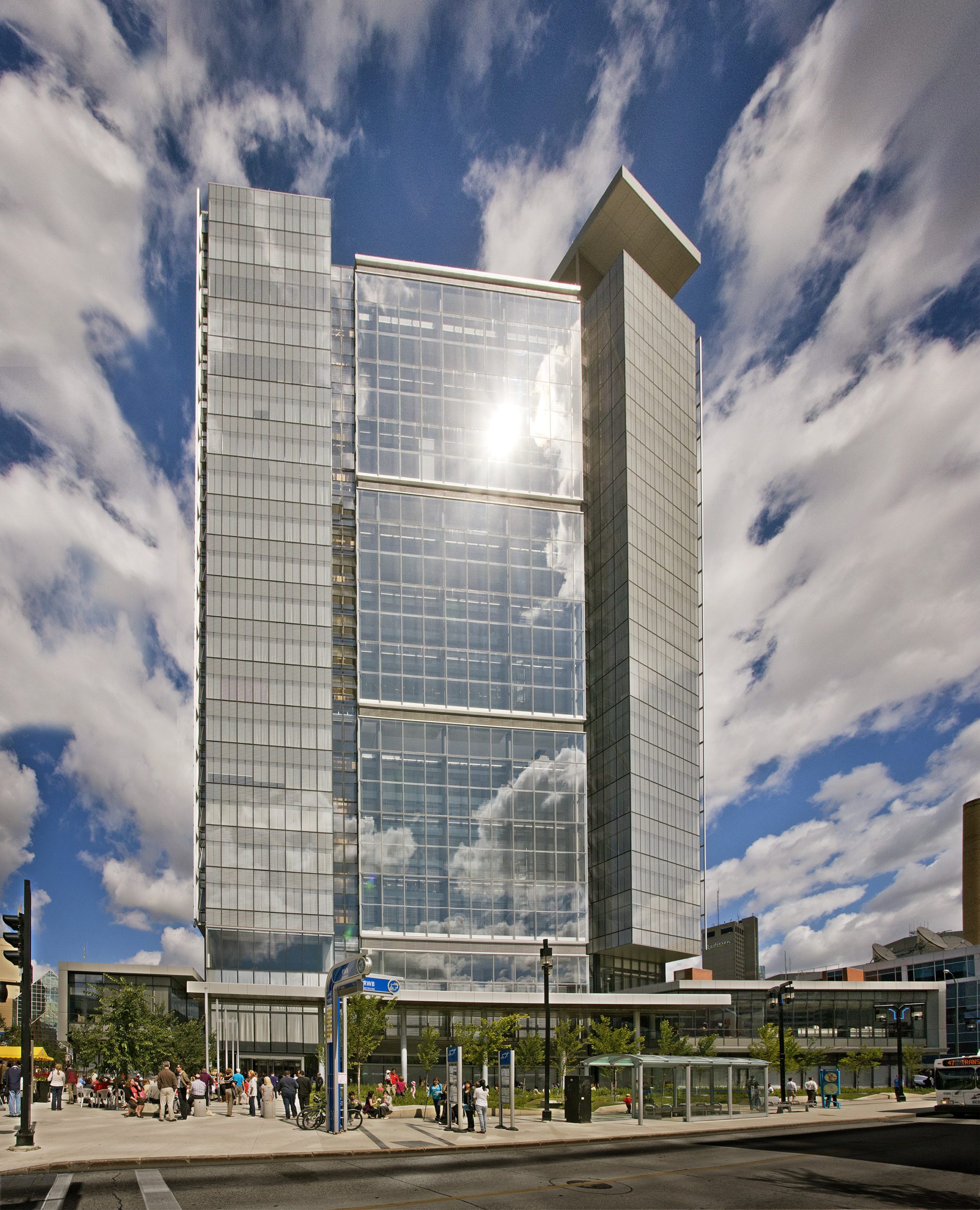
View of south elevation
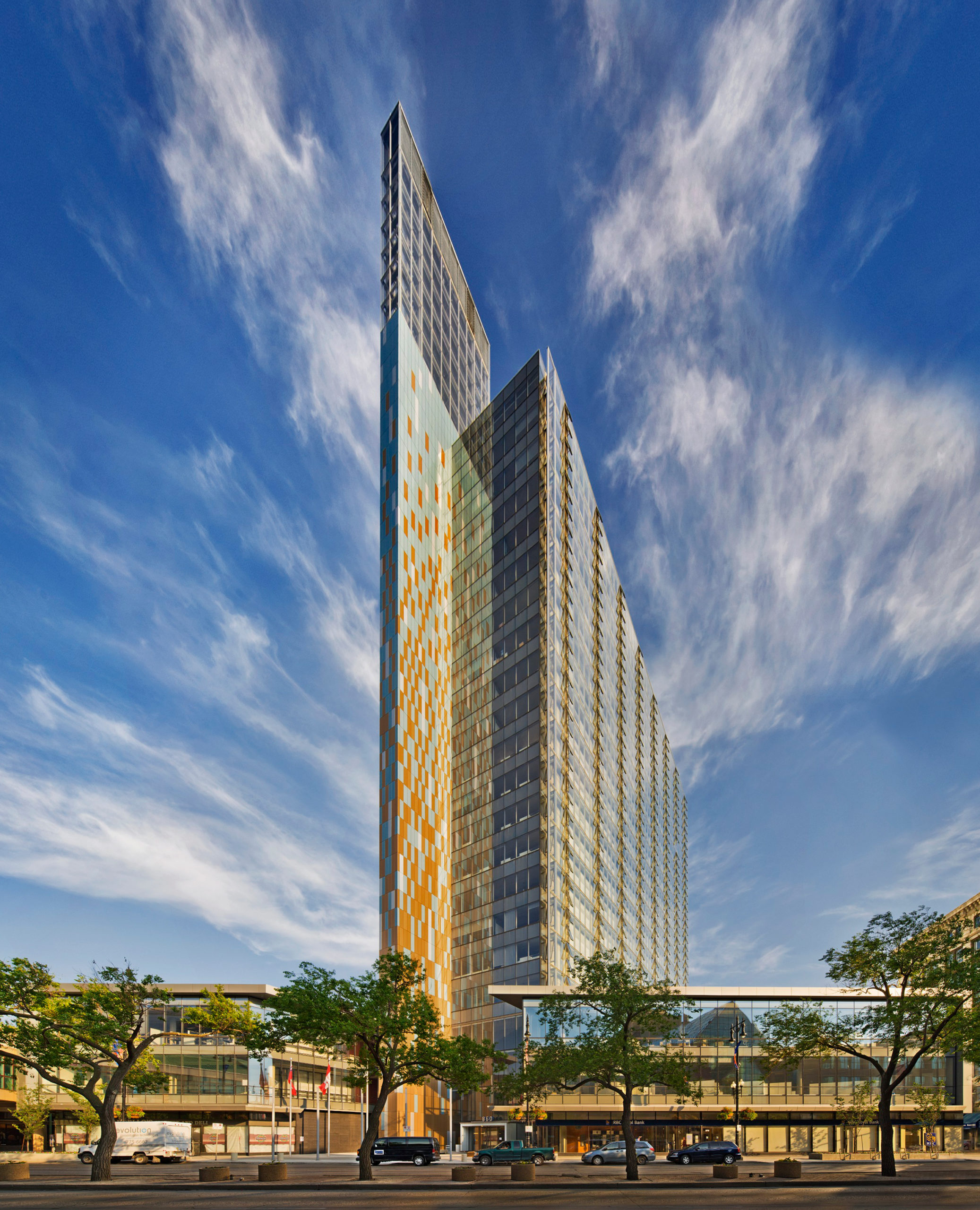
Main façade on Portage Avenue
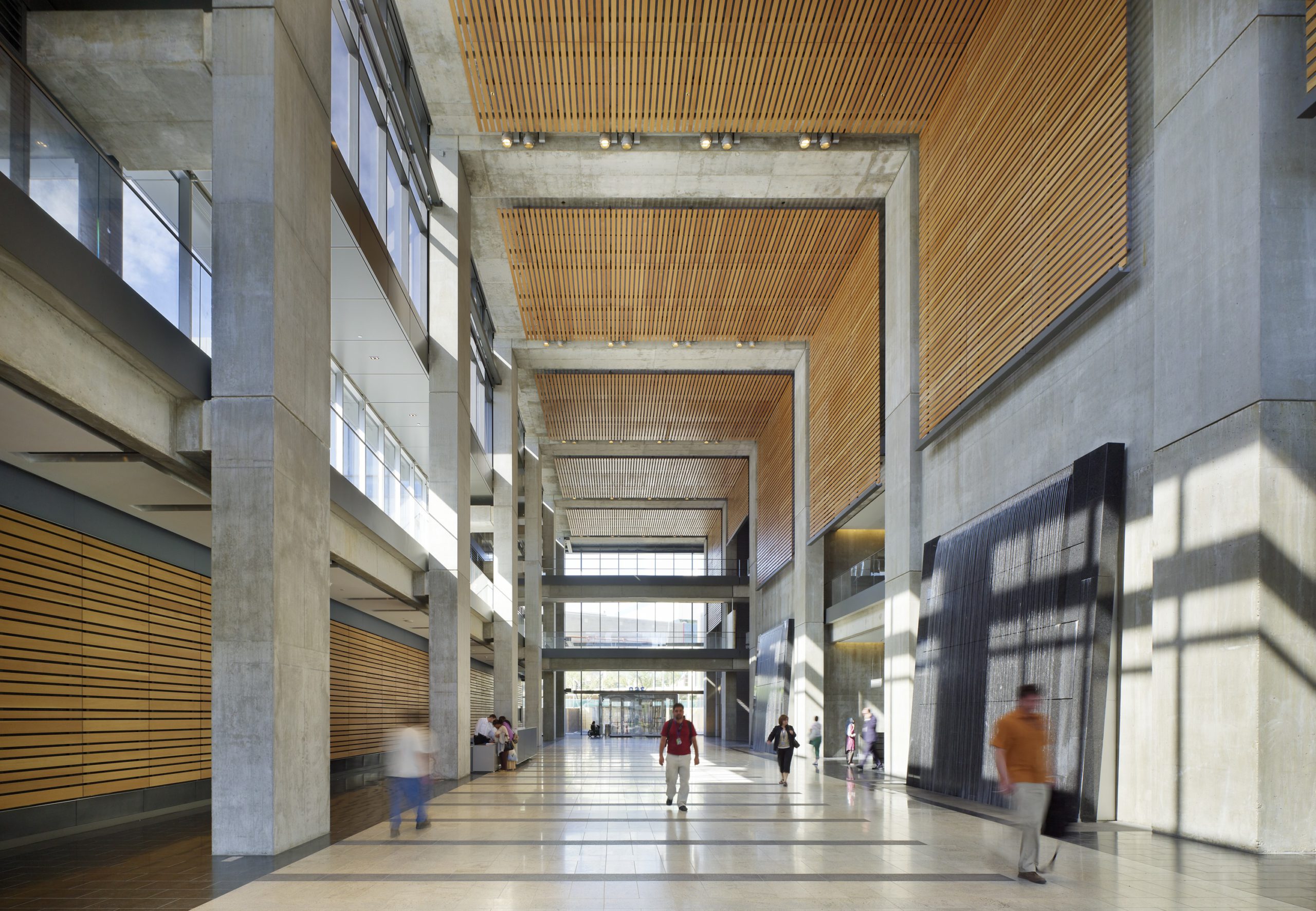
The iconic monumentality of the power dam inspired the overall scale of the building's concrete superstructure, and of the public spaces - the entry gallery and the north atria.
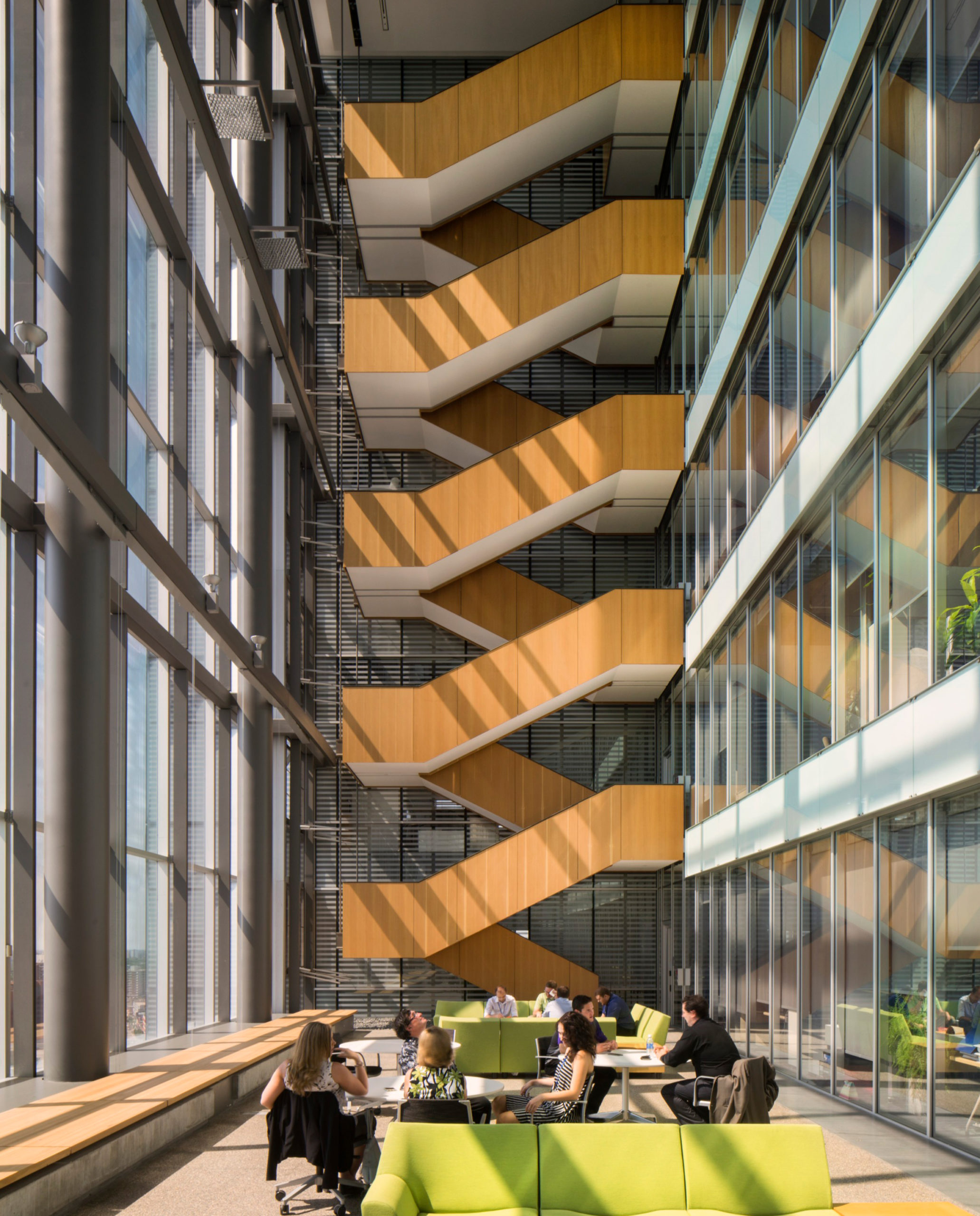
6-storey south atrium stair
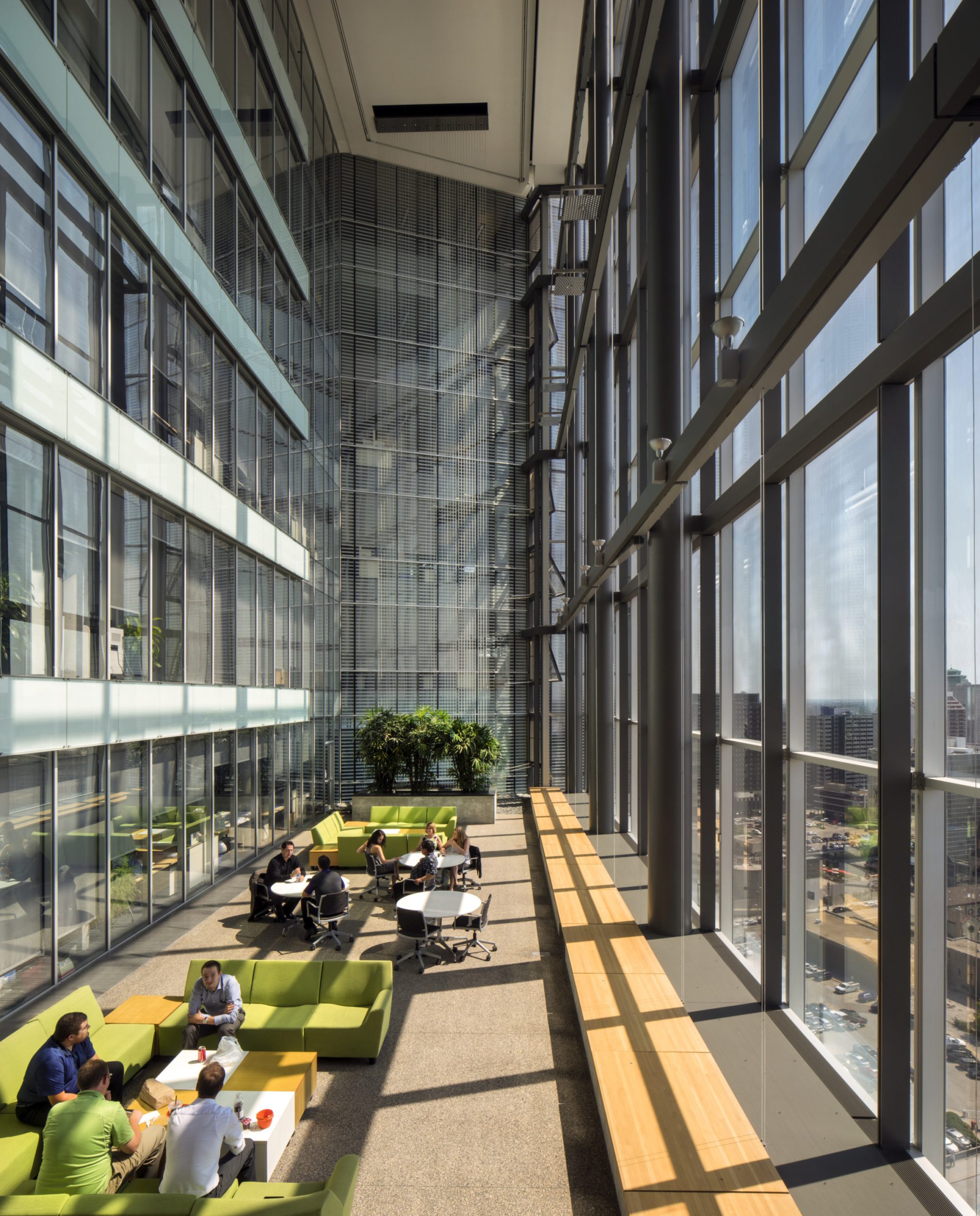
100% fresh air into the offices is first drawn into the 6-storey south atrium. There it is preconditioned by a water feature (tensioned stainless steel cables with conditioned water running down each strand) before being drawn into the office’s raised floors. This feature humidifies the ambient fresh air in winter and de humidifies air in summer.
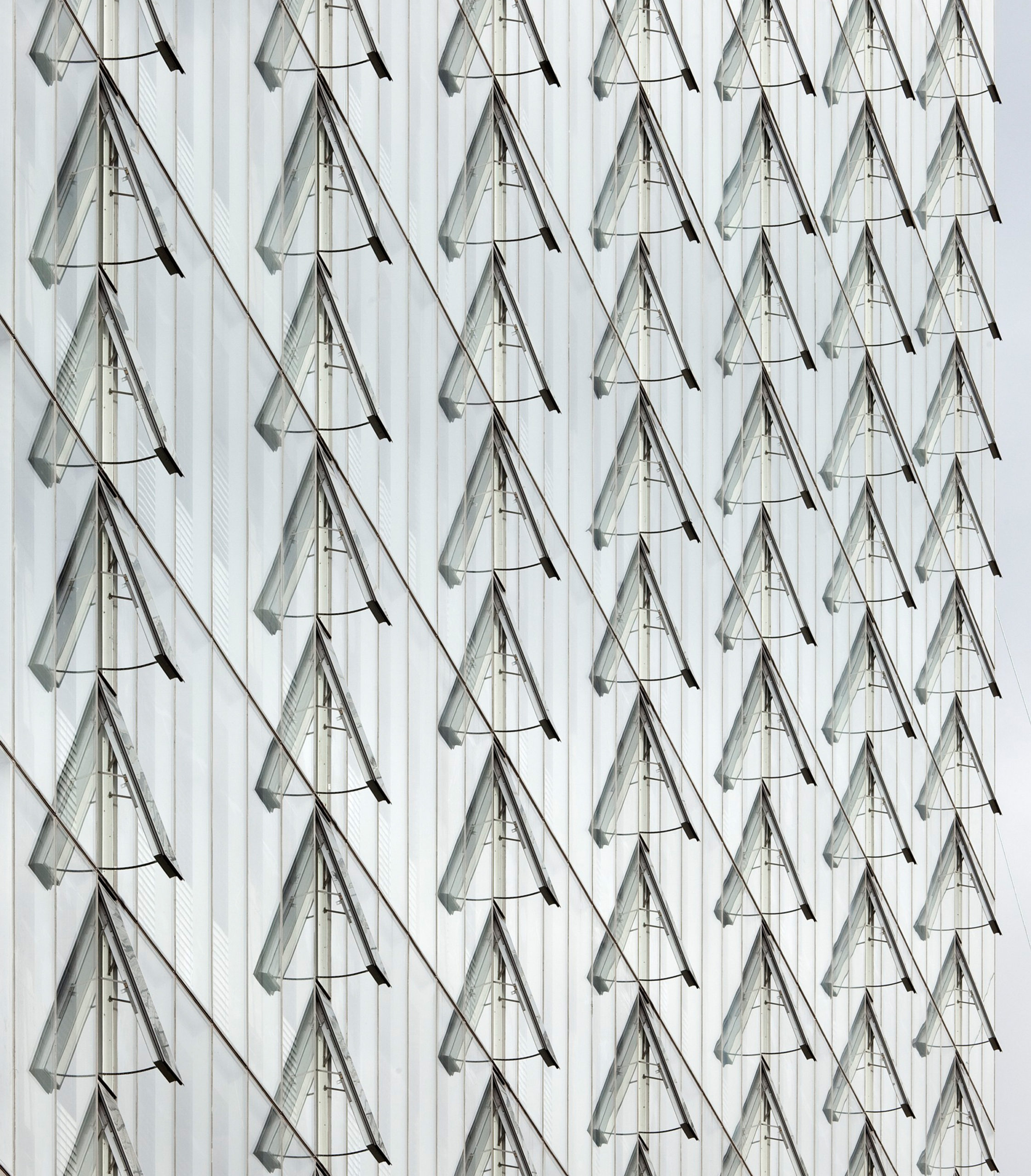
A double façade on the west and east facades creates a high performance envelope which reduces heating/cooling loads by providing a tempered buffer to extreme outdoor temperatures. Operable windows on the inner and outer walls of the double façade permit natural ventilation at seasonally appropriate times of the year.
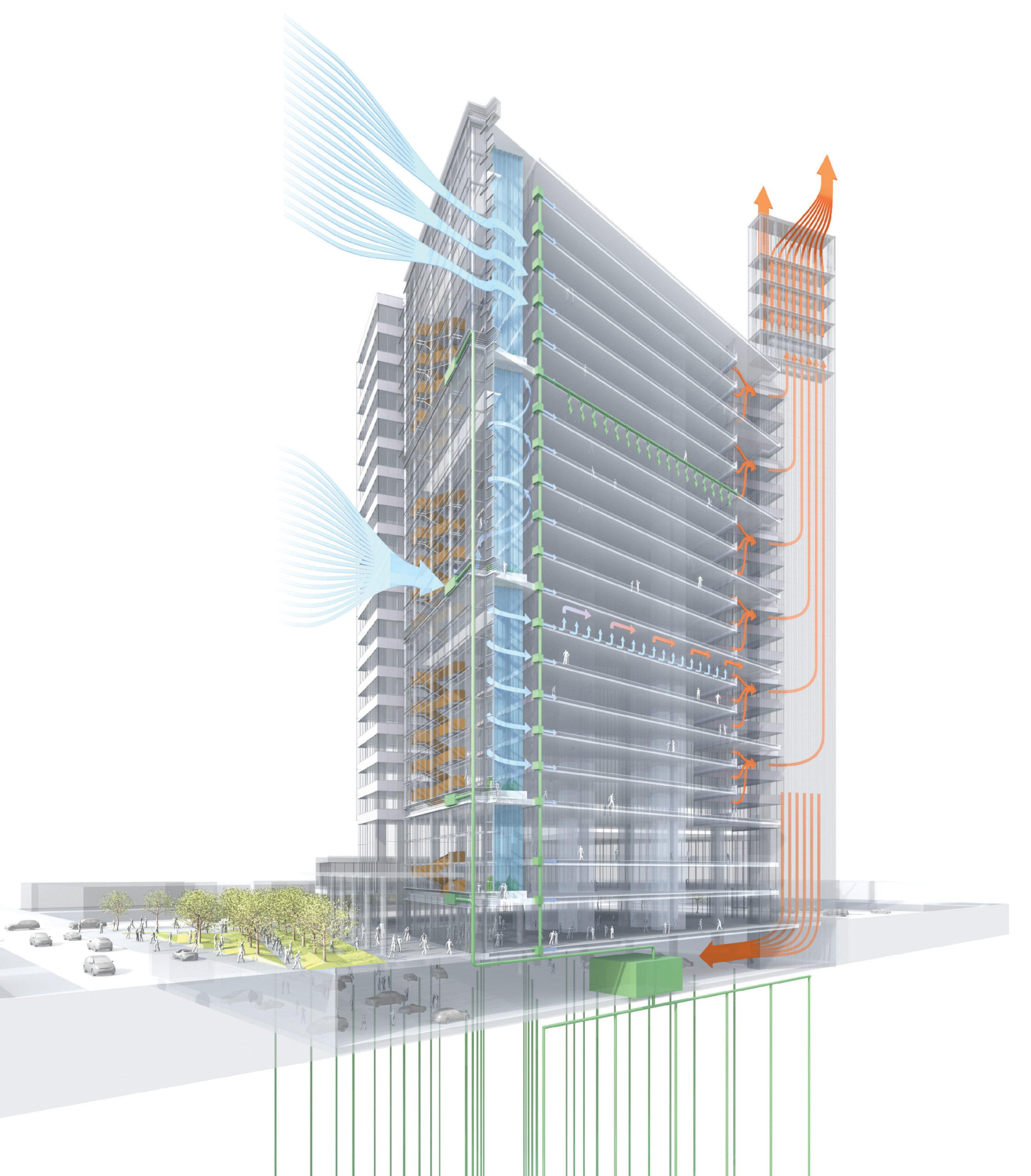
Diagram of passive energy systems
